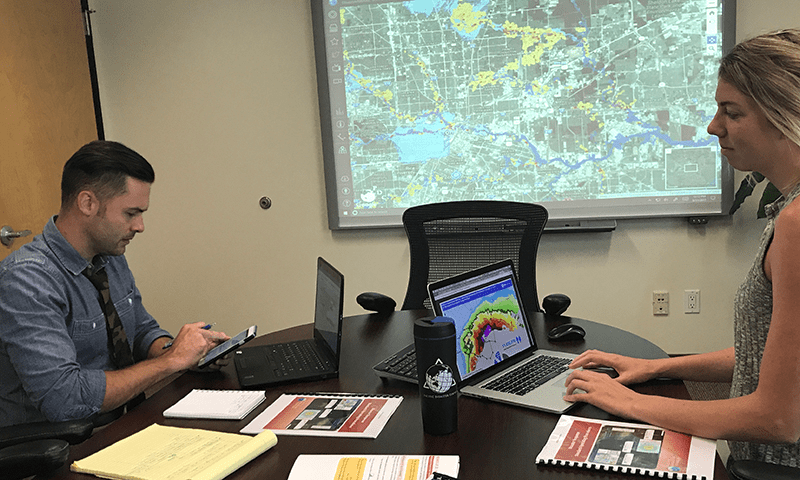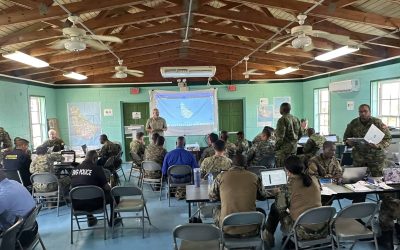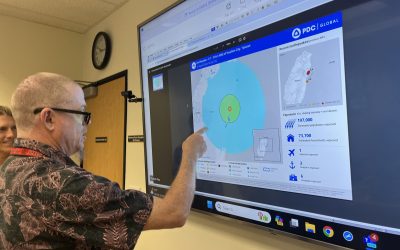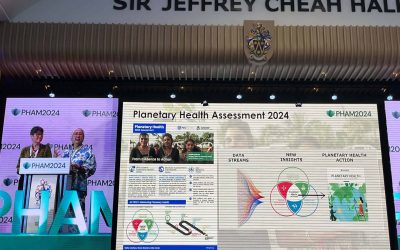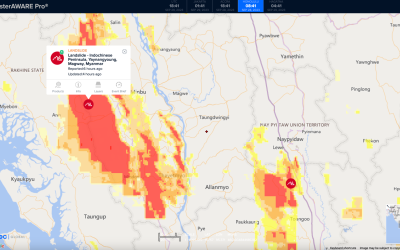What additional rainfall could mean for Houston, Texas and surrounding areas.
PDC’s Tim Manning, Former Deputy Administrator of FEMA speaks to CNN about long-term recovery from Harvey
As the devastating effects of Hurricane Harvey, now a tropical storm, continue to worsen throughout Southeast Texas, the Pacific Disaster Center (PDC) is doing its part to expedite analysis and dissemination of new field data using its powerful DisasterAWARE technology. Working closely with the Texas National Guard, the Federal Emergency Management Agency, and several local authorities, the Center is using its new Global Exposure Model to provide rapid snapshots of potential impacts on the ground. Disaster management agencies are utilizing these new tools to help with humanitarian assistance that spans thousands of square miles while Harvey continues to deluge millions in torrential floodwaters.
According to PDC Science Advisor Doug Bausch, a major challenge with understanding the effects of this storm is that most models only account for either accumulated or forecast rainfall. “With PDC’s Global Exposure Model, we are now able to combine observed rainfall and forecast rainfall with observed and forecast flooding to offer reliable information about the effects of this disaster and to help estimate impacts and needs.”

While Harvey continues to dump rain on Houston, Texas—the nation’s fourth largest city—water is rising to levels never before recorded in the state’s history. Assessing the impacts of forecast rainfall, which is estimated by National Weather Service to be another 20 inches, can be a challenge. To provide a more accurate picture of the impacts, the Center developed a new product that combines forecast rainfall with existing rainfall accumulation.
“The products developed by PDC using its new Global Exposure Model offer vital insight about the impact of this unprecedented flooding event,” said University of Hawai‘I President, Dr. David Lassner, adding that, “PDC will continue to work side-by-side with decision makers to provide comprehensive situational analysis that aids fast and effective response and recovery for the people of Texas in the weeks to come.”
Fmr. FEMA deputy admin.: This will be a long-term recovery and we need to start now from CNBC.
These new products and capabilities provided through DisasterAWARE offer not only the most reliable, near-real-time observations and situational impact analysis, but a centralized, collaborative platform where multiple agencies can access analytical products in one place. This helps to coordinate response and recovery planning between agencies and provides consistent information to guide decision making.
“Coordinated efforts are more important now than ever as thousands of national guardsman and Federal Emergency Management personnel are deployed to aid with this catastrophe,” said Tim Manning, PDC Senior Advisor and Former Deputy Administrator at FEMA, stating that, “with our technology and Center support, new information is being continuously added and updated, making the most reliable information accessible to all agencies at the same time.”
PDC Disaster Management Response Lead, Michael Chatman (left) and Cassie Stelow Disaster Services Analyst (right) provide new analytical tools to support response to Harvey
For more information about Pacific Disaster Center, visit www.pdc.org.
Follow Hurricane Harvey as it progresses at www.pdc.org/event-dashboard/2017_Hurricane_Harvey.
